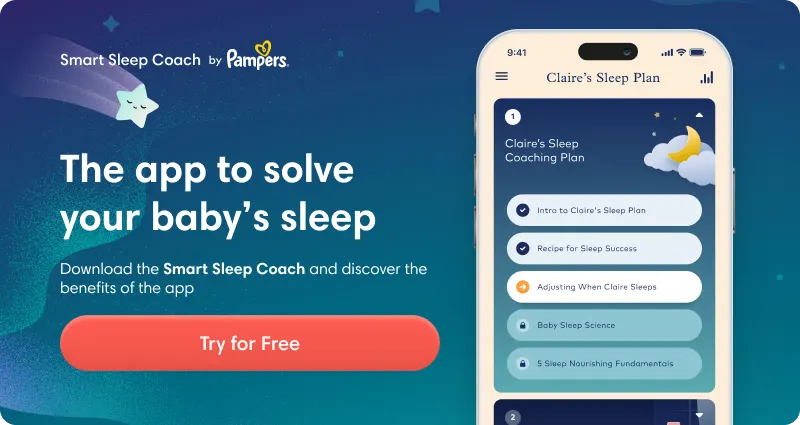What to Do if Your Baby Only Sleeps When Held
Understanding Why Your Baby Only Wants to Sleep When Held
It's a common scenario: your baby sleeps peacefully in your arms but wakes up the moment you lay them in their crib. This can lead to an endless cycle of trying to get your baby to sleep independently. While holding your newborn for naps is normal and often recommended, it can become a habit that is harder to break as they get older. Additionally, always holding your baby while they sleep can prevent you from getting the sleep you need, as it’s unsafe to hold your baby while you’re also asleep.
Why Babies Sleep Well When Held
Imagine waking up in an unfamiliar place or position—it would be unsettling for you too! After spending months in the womb, your baby needs time to adjust to the outside world, which includes sleeping on their back in the crib. Research shows that holding your baby and skin-to-skin contact provide numerous benefits, helping your baby relax and feel secure. For newborns, being held against your body and hearing your heartbeat is familiar and soothing.
When Should You Stop Holding a Baby to Sleep?
Holding your newborn while they sleep is normal and beneficial. However, around 3-4 months, as your baby starts to develop their circadian rhythm and understand patterns, you might consider transitioning them to sleeping independently. At this age, they can develop sleep associations, meaning they rely on being held to fall asleep. This habit can become harder to break as they grow.
Tip
If your older baby relies on being held to fall asleep and you want to transition them to their crib, consider taking this FREE sleep quiz. Expert sleep consultants and pediatricians have created an app that recommends a personalized plan with easy-to-follow changes and tips to help your baby sleep independently.
Safe Ways to Hold a Sleeping Baby
If you decide to hold your baby while they sleep, it’s important to follow safe sleep practices:
If you think you might fall asleep, place your baby in their crib or bassinet on their back.
Avoid co-sleeping or sharing a bed with your baby, as it increases the risk of sleep-related accidents and SIDS.
Keep your baby’s crib or bassinet in your room until they are at least 6 months old.
Tips for Getting Baby to Sleep in Crib or Stopping Contact Naps
1. Set up the sleep fundamentals
Follow Wake Windows: Ensure your baby isn’t overtired or under-tired. The Smart Sleep Coach app can help you track wake windows and sleep schedules.
Create the Perfect Sleep Space: Keep the room dark with blackout shades, maintain a nursery temperature between 68-72°F, and use a sound machine. A consistent bedtime routine in this environment can ease the transition to the crib.
Consistent Bedtime Routine: Babies thrive on routine. An expected sequence of activities such as a lullaby, story, and cuddle can signal it’s time to sleep.
Feed Before Bedtime Routine: Feeding your baby before starting the bedtime routine can help ensure they are awake when placed in their crib, reducing the chance they fall asleep while eating.
2. Make naps in the crib appealing
Start offering naps in the bassinet or crib to get your baby comfortable with sleeping without you. Sleep Consultant Mandy Treeby suggests wearing the crib sheet down your shirt for a day to transfer your scent, which can help newborns feel secure. If your baby isn’t showing signs of rolling over, swaddling can also provide comfort.
3. Put your baby down in their crib drowsy but awake
Hold your baby before naps and bedtime but put them in their crib while drowsy, not fully asleep. This helps them learn to fall asleep without being held. Decrease the time you hold your baby before placing them in the crib to help them adjust.
4. Consider sleep training
If your baby continues to struggle with sleeping in their crib, consider sleep training. The Smart Sleep Coach app can guide you through various sleep training methods suitable for your family. Remember, crying is a normal part of the adjustment process. With patience and consistency, your baby will learn to sleep independently.
FAQS AT A GLANCE
Sleep consultants suggest stopping contact naps around 3-4 months, but there’s no need to stop if it’s working for you.
Conclusion
Transitioning from holding your baby to having them sleep independently in their crib can be challenging. However, with time and consistency, your baby can become a strong, independent sleeper. Remember, it’s normal for your baby to resist at first. Stay patient and consistent, and they will adjust.
Every baby is different, and so is every parenting approach. As long as you follow safe sleep guidelines, whether you hold your baby while they sleep or not is up to you.
How We Wrote This Article The information in this article is based on expert advice from trusted sources like the American Academy of Pediatrics and the American College of Obstetricians and Gynecologists. Always consult medical professionals for diagnosis and treatment.

![[CA] WSD 2 - Mom and baby World Sleep Day 2](https://images.ctfassets.net/2ql69mthp94m/7scfzoeyj6q7AgwnsCoMZz/29e577f04e1fa9a8f8bba611b0eeadef/WSD_-_Desktop_-_Mum_and_baby.png?fm=webp&q=70)

